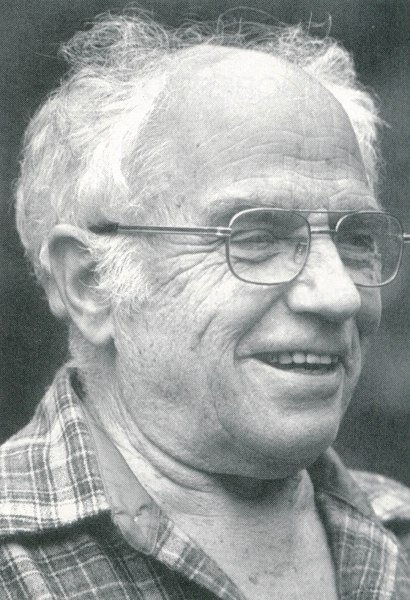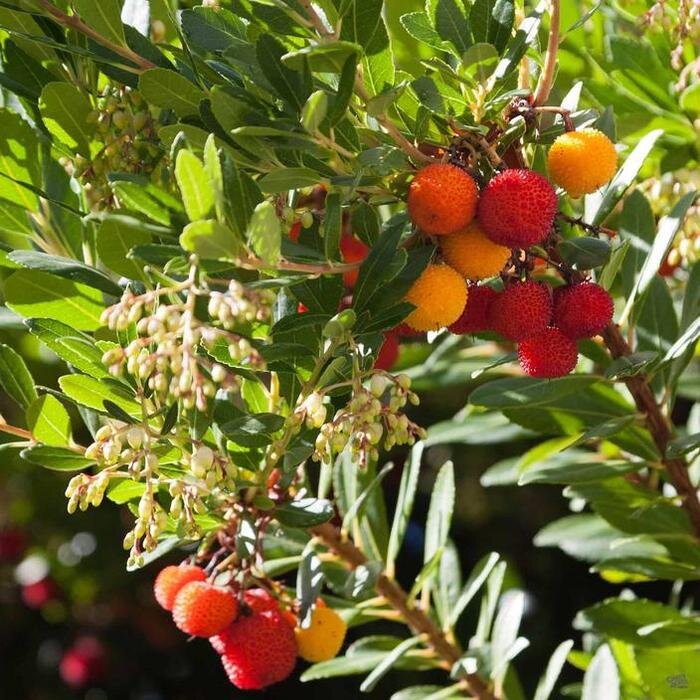Victor Reiter, Jr.
Victor Reiter, Jr. - photo credit George Waters
Victor Reiter Jr. (1903-1986) was San Francisco‘s most famous grower, collector, and hybridizer of plants and trees for many years, and he was one of the founders of the California Horticulture Society in the 1930s. He was responsible for introducing many hybridized varieties of plants to the gardening world, including echeveria, abutilons, Heuchera, and thymes, but he was particularly well known for the creation of many different varieties of fuchsias. Despite his importance to horticulture in California, it’s surprisingly hard to find information on Reiter online – perhaps because all of his work happened well before the online era. This blog post is an attempt to address that oversight. I’ve tried to gather in one place some details of the life of one of the most important horticulturalists in California from the 1930s through the 1980s.
Reiter’s father, Victor Reiter Sr., was the manager of the Hotel Oakland in Oakland and, later, of the Palace Hotel in San Francisco (he was manager at the Palace in 1923, the year President Harding died while staying at the hotel). Reiter Sr. moved the family to 1195 Stanyan Street in 1926. Lots on the west side of Stanyan Street were being sold off by the family of Adolph Sutro, the silver baron and former San Francisco mayor who owned the entire Sutro Forest and adjoining neighborhoods at the turn of the century. (The 1930 census shows that the Reiters’ next door neighbors at 1199 Stanyan were Henrietta Sutro, Adolph’s daughter-in-law and her son Adolph Sutro.) The family’s interest in plants began to grow with Reiter’s Sr.’s retirement, when he enthusiastically began growing (and hybridizing) roses in the then-small backyard at that address.
Victor Reiter Jr. was in his late 20s in 1932, when a freak cold snap led to the founding of the California Horticultural Society. In early December, temperatures plunged well below freezing for several days, and many plants, including established trees, were killed outright. From A History of Cal Hort, Pacific Horticulture, Fall 2001:
Victor Reiter, Jr. in his garden - photo credit California Horticultural Journal, April 1968
“A number of horticulturally minded people affected by the freeze—nurserymen, estate owners and their gardeners, academics from the University of California at Berkeley, and backyard gardeners—gathered in a North Beach restaurant to assess the damage. After a few meetings, rapport was established and a permanent society emerged as the California Horticultural Society, usually known today as Cal Hort. … Victor Reiter, Jr. guided the society from its founding until his death. He held many official positions including president and was a founder in 1968 of the Pacific Horticultural Foundation.”
Reiter, himself, in 1961, wrote a fascinating history of the early days of the California Horticultural Society, in which he played an important role: https://calhortsociety.org/about/cal-hort-first-31-years/ Six years later, the Society gave Reiter its annual award (I think it was a kind of “lifetime achievement award”), and published a “brief outline of the award recipient’s background”.
In the early 1930s, the Reiter family acquired an additional acre of land adjoining their backyard from the Sutro heirs, a triangle-shaped lot wedged between Stanyan Street, Woodland Avenue, and the Sutro Forest. In 1937, the Reiters established a commercial nursery (known as the “La Rochette Nursery”) on the newly acquired parcel. The nursery gained fame among plant enthusiasts over the next 25 years as the source of rare and exotic plants that Victor collected through purchases and exchanges with sources throughout the world. Reiter not only collected plants, but also created new cultivars by breeding and hybridizing plants; the nursery was especially famous for its fuchsia introductions. The commercial nursery was closed in 1963 (one story, not verified, is that the City of San Francisco notified the family that a commercial nursery could not be permitted in a residential area), but Reiter continued to plant and care for the specimen plants and trees on the property until his death.
The Reiter family garden in Spring 2020
The Reiter garden is still in the family’s hands; Victor’s wife Carla died in 2013, but two of Reiter’s children still reside on the west side of Stanyan Street and have done a beautiful job maintaining the plantings. The garden’s large Campbell’s magnolia - a 1947 wedding present to Victor and his wife from an English well wisher - is a centerpiece, with beautiful pinkish-white flowers blooming every January. The garden has a number of remarkable specimens from New Zealand, including cabbage palms (Cordyline australis), northern ratas (Metrosideros robusta) and a rare yellow-flowering New Zealand Christmas tree (Metrosideros excelsa ‘Aurea’). The property is private, but you can catch a glimpse from the Sutro Forest trail that starts just a few feet above the corner of 17th and Stanyan streets; the garden is visible on the right after a short walk into the forest.
Arbutus X ‘Marina’ close-up
Reiter had an important role in the introduction of the hybrid strawberry tree - Arbutus X ‘Marina’, now one of San Francisco’s most commonly planted trees. The origin of this hybrid is uncertain, but it’s thought to be a hybrid of two European species, and many have speculated that the tree arrived in 1915 for the Panama–Pacific International Exposition as part of a consignment of plants from the Italian government. Subsequently a few plants were propagated by Charles Abrahams at his Western Nursery on Lombard Street in the Marina district. When that nursery closed in 1933, a boxed plant was purchased by Strybing Arboretum, then under director Eric Walther. Victor Reiter took some cuttings from that tree in 1933, and planted one in his garden in 1944, which eventually became the largest Arbutus ‘Marina’ in existence (approximately 40’ tall). The Saratoga Horticultural Foundation obtained some cuttings from the tree in the Reiter garden, and introduced the tree to the California nursery trade in 1984, naming it Arbutus X “Marina’, commemorating the location of the Western nursery and as a tribute to its owner and one of California’s early plantsmen, Charles Abrahams.
Yellow-blooming New Zealand Christmas tree (Metrosideros excelsa ‘Aurea’) at 1221 Stanyan Street
The Reiter family is also responsible for an official City of San Francisco “landmark tree” at 1221 Stanyan Street, near the corner of 17th Street. The large New Zealand Christmas tree (Metrosideros excelsa) at that address is (in this author’s opinion) the best specimen of the species on San Francisco’s streets. New Zealand Christmas trees aren’t unusual in San Francisco – there are many hundreds of them in the City, popular for their showy red bottlebrush flowers. And indeed, all of the many hundreds of New Zealand Christmas trees on San Francisco’s streets have red flowers — except for this one, which blooms every May and June with spectacular yellow flowers. The story of this tree goes back to 1940, when there was a natural mutation of the species on tiny Motiti Island in the Bay of Plenty off New Zealand’s north coast. Reiter was one of the first Californians to obtain a cutting after the variety was introduced to cultivation later that decade (possibly from Strybing Arboretum, which still has a mature yellow-blooming specimen near the Arboretum’s entrance). The family planted the curiosity on the street in front of their home at this address, and, more than 70 years later, the tree is thriving - a beautiful mutant with an amazing pedigree.
A final post-script: as I said at the start of this post, if you google “Victor Reiter”, you won’t find much about the man and his accomplishments. What you will find is result after result of plant cultivars: Armeria ‘Victor Reiter’; Cistus ‘Victor Reiter’; Abutilon ‘Victor Reiter; Thymus ‘Victor Reiter’ (which grows in our back yard, incidentally) and so on. Although Reiter was famous for his skill in breeding plants, I don’t think these are cultivars that he created - rather, they were created by others and named after Reiter to honor him. An appropriate way to honor a man who did so much to further California horticulture.




